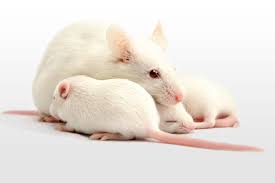Sex is big business.
Florid intro sentences aside, in agriculture, sex is a large—and largely under-reported—animal welfare issue that straddles economics as well. The numbers really aren’t good. In the UK, 95,000 male calves are culled every year. In Australia, 600,000. In Germany, 200,000. We couldn’t find numbers for Canada because the topic isn’t well researched but the few studies done record paltry neonatal care compared to females, long travel with irregular feeding times and, often, on-farm euthanasia. That’s just the dairy industry.
In Canada alone, 22.5 million male chicks are culled every year to produce our eggs. In France, that’s 50 million every year. Is pork any better? Not much. As piglets mature, they release chemicals that release a foul smell when the meat is cooked so any male pigs used for meat are killed before that happens.
But what if females could produce litters or offspring of only the desirable sex? And by the way, not only females. Sometimes, males are required, too, especially in the lab environment where this question was first raised. Enter Peter Ellis at the University of Kent, and collaborators Charlotte Douglas and James Turner at the Francis Crick Institute in the UK.
“My research focused on testes so we needed male mice,” says Peter. “I had to give the females of the litters to researchers who specifically wanted them—or cull them. That makes you aware of sex. So our goal to ensure that as few animals get culled just for being the wrong sex.”
That idea isn’t new. Sperm sorting is already used in the dairy industry but it’s not infallible and can damage the sperm. In pigs, the technique isn’t fast enough to be viable. So, basically, we can do better.
Embryo selection using CRISPR gene editing is a leaps-and-bounds improvement. For starters, it’s one-hundred-percent effective. Guaranteed. It’s also ethically more humane to cull embryos that have no nervous system and aren’t capable of suffering than live baby animals. And bonus, the resulting litters are a little larger—in mice. See here for the technical details.
Peter is quick to remind us that this research is still in the early stages. We know it works in mice. It’s bound to work in other animals but that’s yet to be tested. And at the farm level, it’s years away. In the Canadian beef industry, those coming into closest contact with the technique would be breeders.
“Once the line has been generated, it’s simply a matter of breeding,” confirms Peter. “You don’t have to gene-edit every generation, the genes required can be maintained stably in the sire and dam lines. The male carries a gene on his Y chromosome, and the female has a guide RNA that activates it. Cross them, and you get the required offspring in the next generation.”
One reason embryo selection is years away in agriculture is the public concern over genetic modification technology in the food chain.
“The UK is considering relaxing the rules around gene editing in ag,” says Peter. “That could provide important benefits, but also comes with some risks about reducing care and welfare. The Nuffield Council on Bioethics has done a lot of work around this. What level of biotech the public wants and why it’s acceptable are big questions. What we’ve done is provide a proof-of-principle to inform that debate… to take it out of the hypothetical and abstract into the real world.”
The Nuffield Report is clear that the public is suspicious of ag technology that lines producer’s pockets but more likely to be on board with it to improve animal welfare. However, the debate still has to explore acceptability behind using technology for breeding but where the end product is “normal”.
“We’re not engineering cows to produce more milk or grow faster. These animals will be the same as ones from conventional breeding practices,” says Peter. “Since milk doesn’t contain cells from the cow, that too will be normal. My sense is that public debate on gene editing will shift when people realize the welfare benefits that are possible. In the short term, that’s what our research will accomplish.”
In Canada, where GM salmon and apples are already on store shelves, public debate might reveal different answers than in the UK. Gentec researcher Ellen Goddard and her team are the national go-to experts on public acceptance and willingness-to-pay for technology-enhanced foods.
“I’d be very happy if Gentec decided to sponsor public surveying at a more granular level in Canada,” says Peter, who is a former collaborator of Gentec CEO Graham Plastow from his Ucambridge days.
Another reason for the long time horizon for embryo selection in ag is quite simply the need for more research. The research in mice represents 6-7 years of work, of which the first three alone were to develop cell lines. So the main next step—in parallel with the public debate—is developing cell lines to make sure that the parts that make the sex selection system in mice also work in other animals.
By then, we should have a better idea of whether the public, wherever they are, really wants to make a difference to animal suffering.
For more reading on this subject, try the official press release or the Francis Crick Institute website.

